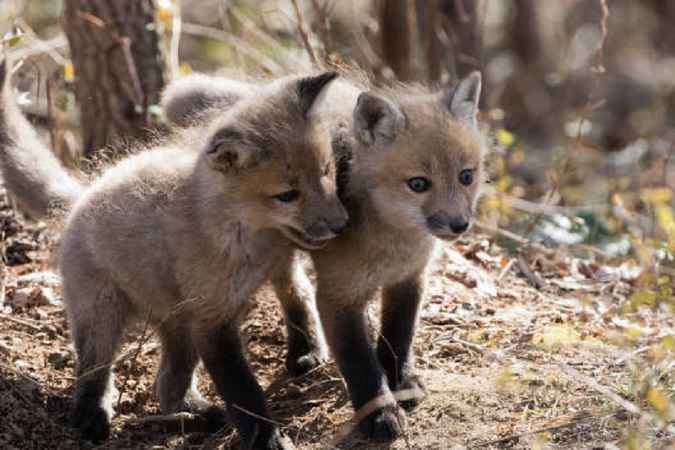Wild fox in Minnesota tests positive for avian influenza

[Photo of fox kits courtesy of the U.S. Fish and Wildlife Service.]
(ABC 6 News) – A wild fox from Anoka County has tested positive for highly pathogenic avian influenza. This is the first confirmed case of HPAI in a wild mammal in Minnesota.
The University of Minnesota Veterinary Diagnostic Laboratory alerted the Minnesota Department of Natural Resources, which is responsible for monitoring the health of the state’s wildlife. The National Veterinary Services Laboratory later confirmed the positive test earlier this week.
Last week, two red fox kits in Ontario, Canada tested positive for HPAI. Those kits were the first reported cases of the current HPAI outbreak in a wild mammal in North America. The Minnesota fox also was a kit.
The DNR routinely responds to reports of sick wildlife and conducts testing for many wildlife diseases, including canine distemper and rabies in foxes. In light of these most recent findings of HPAI in fox kits, the DNR will add avian influenza to the routine screening process when foxes exhibiting neurological symptoms are submitted to the Minnesota Veterinary Diagnostic Laboratory.
This year’s HPAI strain is more aggressive and has caused more deaths amongst domestic poultry and wild birds than the previous strain in 2015.
“Testing in Minnesota has confirmed HPAI in nearly 200 wild birds, including 19 species of birds, primarily waterfowl and raptors,” said Michelle Carstensen, the DNR’s wildlife health program supervisor.
The DNR is coordinating bird sampling efforts with U.S. Department of Agriculture Wildlife Services, the U.S. Fish and Wildlife Service, The Raptor Center, the Wildlife Rehabilitation Center of Minnesota, Wild and Free, and other wildlife rehabilitation centers. The DNR and its partners are still learning about this new HPAI strain and its effects on wildlife. The DNR’s monitoring efforts are designed to learn where the strain is spreading and what species might be affected.
Minnesotans who find sick or dead waterfowl and raptors — which are the wildlife most affected by HPAI — should contact the DNR to file a report. Learn more about what kind of reports the DNR needs for monitoring purposes, its response to the avian influenza outbreak, and contact information on the DNR website.